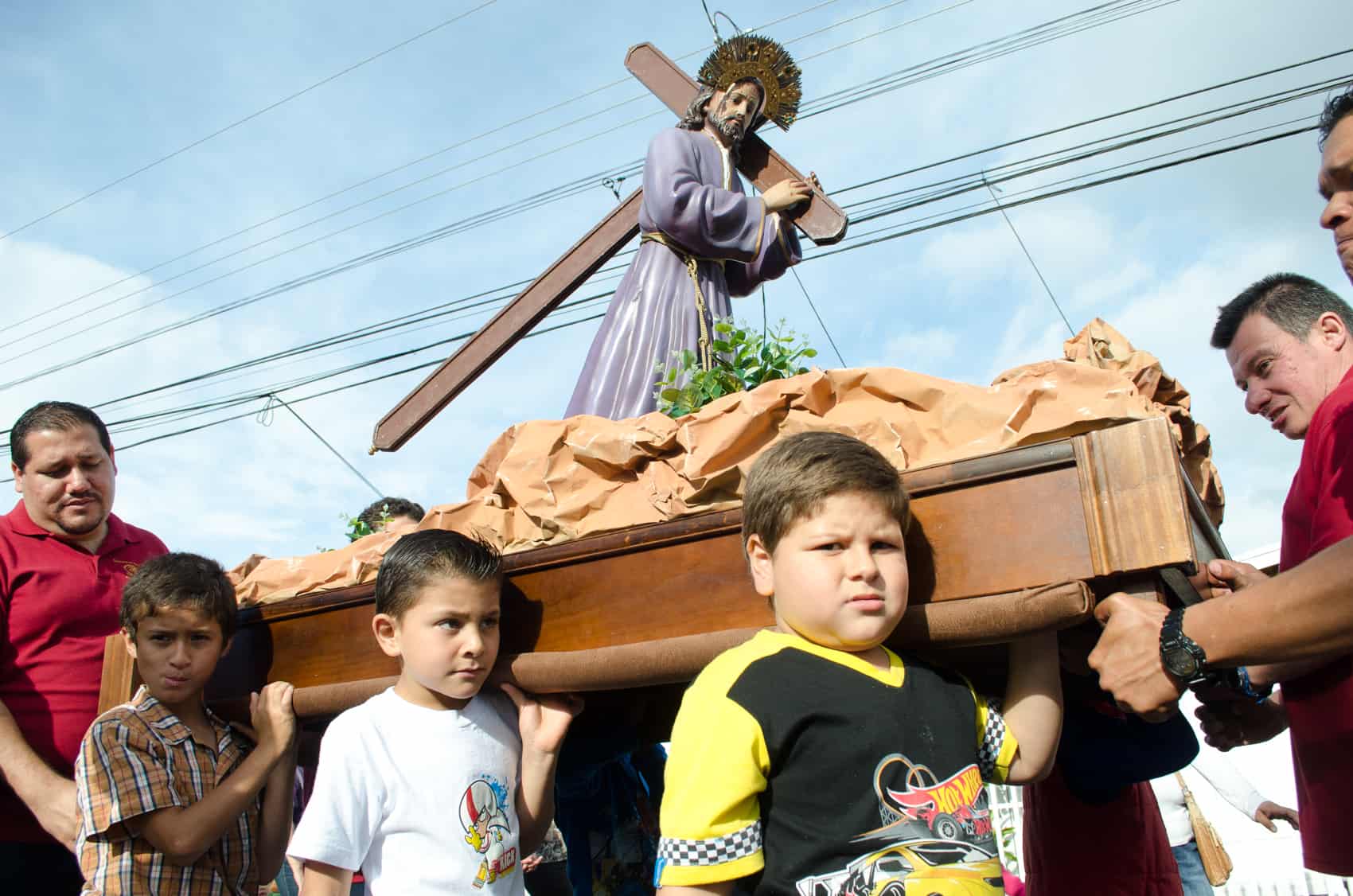Semana Santa, or Easter Holy Week is the most solemn religious week of the year. With schools, factories and businesses closed, it is for many a vacation week, and while beaches and mountains attract a lot of Ticos, there remain strong feelings for the religious, traditional and social values incorporated in Easter processions and observances.
All Catholic parishes give out sprays of palm leaves. In many churches, the scene is acted out with members of the parish playing the roles in Biblical dress and, if possible, with Jesus riding a donkey.
Holy Week is not a week for parties and pleasure, but rather for reflection. Churches are open for confession and meditation. Thursday is the procession of the Last Supper, when Jesus and his apostles met for the Passover seder and Jesus announced his coming agony and death.
Processions
Processions headed by Jesus, the apostles and the Marias start at a given point and walk in silence to the church where the supper scene is enacted. Processions are held at different hours in different parishes. (In my area, they are no longer held at night because of traffic. Years ago there was no traffic on Easter Thursday and Friday.)
Friday’s processions are the most elaborate and solemn of the week. A drum cadence sets the pace, and everyone – adults, children, families together – joins in. Small altars are set up along the route to represent the 14 Stations of the Cross, and the procession halts in front of each for a passage from the gospels, read or acted out.
Led by Roman soldiers, the Roman court, Jesus carrying the cross, his followers, the two thieves who were also crucified, Veronica and Simon, the procession ends with the crucifixion, with Jesus and the thieves roped to crosses, and the final words from the gospel. This takes place on the church lawn, the soccer field or wherever a crowd can gather. In San José, the procession leads to the Metropolitan Cathedral.
Easter Sunday gets less attention than the previous days and is almost anticlimactic, but churches do have processions of the Resurrection, which are joyful and accompanied with music.
Easter Eats
Special foods are a part of Holy Week. The most common are bacalao, or dried cod fish, which is made into soup for Friday and Saturday, and chiverre, the oversized pumpkins sold in markets and stands around this time, which is cooked into a sweet jam eaten plain or used in empanadas and other baked items.
Pan casero, a sweet, flattish bread, is also a Holy Week specialty, and is even better if baked with leña or wood fire for the slightly smoky taste. Encurtidos, vegetables pickled with vinegar, mustard and bay leaves, accompany all dishes. Heart-of-palm salad and tuna salad with seashell macaroni are also on Tico tables this week.
Judas Night
Saturday night before Easter is Judas Night, both feared and celebrated. Years ago, it was a night of pranks when young people stole plants and furniture from porches and carried their booty off to the plaza in front of the church. They also built a Judas, an effigy made of straw and old clothes on a wooden frame, and stuffed firecrackers inside it.
All across Costa Rica, Judases were marched from house to house, scaring some and angering others. At dawn, the Judases were burned in the church plaza, the explosions from within waking up one and all.
In time, Judas Night led to vandalism and violence, and it is still prohibited in some places such as Barva de Heredia, north of the capital, where fires were set and windows broken in the night. However, people wanted to revive the tradition, and neighborhoods and communities now have Judas burnings under supervision, often early in the evening, with cimarrona music for all to enjoy.
This article first appeared in 2012






